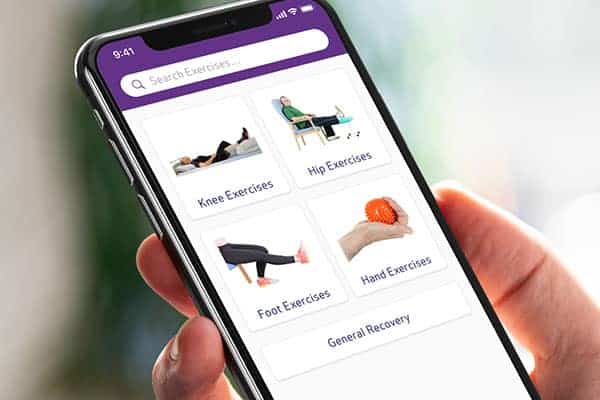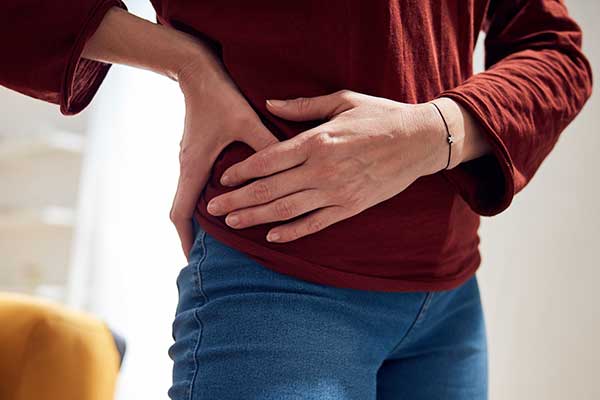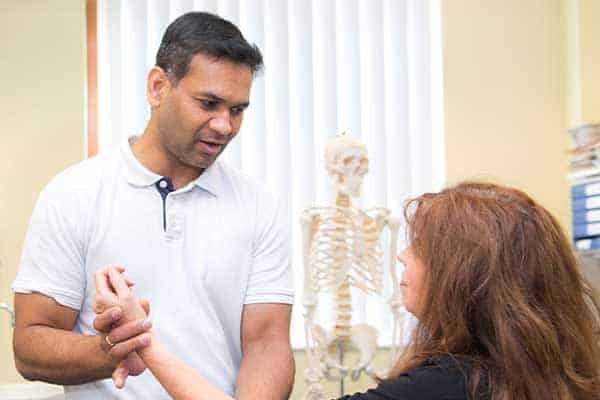Osteoarthritis of the hip is a condition where your hip joint changes and grows more painful to use.
Osteoarthritis of the hip is a normal and natural part of the ageing process. It can be treated and managed but not cured.
What causes osteoarthritis of the hip?
Osteoarthritis can affect any joint in the body. When the smooth cartilage gets worn, it becomes thinner and rougher. This can lead to more friction, stiffness and pain.
The condition develops either because your joints have seen a lot of use (typically by the time you are in your late 40s) or due to a previous injury. Joints that carry a lot of weight are particularly vulnerable, such as the knee and hip.
In the case of osteoarthritis of the hip, a history of high impact activity or manual labour may be a contributing factor.
What are the symptoms of osteoarthritis of the hip?
Osteoarthritis of the hip affects different people in different ways. Some people might show severe changes on an x-ray and yet experience little or no pain. Other people may show any hardly any change yet experience considerable discomfort and difficulty.
Although younger adults can be affected, it is most common over the age of 50 and typically develops gradually.
Typical symptoms include:
- Pain at the front and side of your hip, including the groin and sometimes the thigh.
- Stiffness and restricted movement in your hip joint.
- Pain that feels worse in the morning or after being seated for a long time.
- Pain that can feel worse after load bearing activity or at the end of the day.
- Your hip giving way when you put weight on it, leading to a feeling of instability.
These symptoms can flare up and settle down again.
How is osteoarthritis of the hip diagnosed?
Degeneration in the hip can be observed with an x-ray. However, these physical signs are not necessarily linked to your actual experience of pain or stiffness and so your doctor or physiotherapist may diagnose osteoarthritis of the hip and recommend treatment based on your symptoms rather than a scan.
What are the treatment options for osteoarthritis of the hip?
If you have been diagnosed with osteoarthritis of the hip, there is plenty you can do to manage your condition.
Exercise can be painful, so should be gentle to start with. However, regular exercise will keep your hip joint moving and build up the strength of the supporting muscles, which can help to reduce the load on your hip.
In addition to specific hip exercises, aerobic exercise is recommended, including non-weight-bearing exercises such as cycling and water-based exercises such as swimming, which reduce the load on your joints. Pilates and yoga can also be helpful.
Another way to lessen the load is to lose weight, if you are overweight, and general aerobic exercise will also help with this.
You may wish to consider using a walking aid, such as a walking stick. Your physiotherapist will be able to advise you on the correct type and height. Some people also benefit from a change of footwear or the use of insoles (orthotics).
It is important to manage the pain, as this will help you maintain an active lifestyle.
You could apply gentle heat or ice to the painful area. (Do not put ice directly next to skin as it may cause ice burn. Wrap it in a damp tea towel.)
You could try anti-inflammatory painkillers such as Ibuprofen. Some anti-inflammatory painkillers also come as creams or gels, which you can rub over your hip area. These tend to produce fewer side-effects than those taken by mouth. If you cannot take anti-inflammatory painkillers, other painkillers such as paracetamol, with or without codeine added, may be helpful. Ask your doctor or pharmacist for advice.
If you find you are unable to manage your symptoms yourself, your doctor may offer you other treatments, including injections or surgery.
What is the prognosis (outlook) for osteoarthritis of the hip?
Osteoarthritis of the hip cannot be reversed, but further degeneration may be slowed with the appropriate exercise regime and lifestyle.

Pocket Physio | Download now
Search for ‘Pocket Physio’ on the Apple App Store for iOS and the Google Play Store for Android to download for free.




